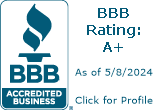Terminating a retirement plan can seem like a daunting task. It might even appear extra challenging when your retirement plan is completely challenging. Have no fear, it’s not as scary as it may seem! Let’s walk you through the how to terminate a Solo 401k plan, step by step…
Step 1: Rollover or distribute plan assets
Decide how you will withdraw funds from the Solo 401k. There are two typical ways to get money out of a retirement account when you terminate a Solo 401k:
- Rollovers
- Distributions.
Often, removing funds from the Solo 401k is the most time-consuming step. Once you get past this part, it’s generally a quick and smooth process.
Rolling Out Assets
Rolling funds to another qualified retirement account will generally not be a taxable event. Therefore, you shouldn’t need to pay taxes if you are directly rolling funds into another retirement account. However, you do need to notify the IRS. You do this when filing your taxes. All rollovers in a specific calendar year should be reported on that same year’s tax returns.
For example, imagine you terminate your Solo 401k on June 20, 2019 and roll out all of your funds that same month. You’ll report the rollover on 2019’s tax return (filed by April 15, 2020). Your CPA may also need to file form 1099-R to document withdrawing funds from the retirement plan. Always check with your CPA/tax preparer for tax reporting.
You can roll out assets or cash into another retirement plan. The self-directed IRA LLC is a great retirement vehicle to consider, so you can retain checkbook control of your assets. This is a good strategy to consider if you own alternative assets, such as real estate, cryptocurrencies, tax liens, or gold & silver.
Distributing Assets
Depending on the tax classification of the funds, distributing assets may be a taxable event. If you are distributing traditional (non-Roth) funds, you and your CPA will calculate and pay taxes on any amount that you’re distributing. Additionally, if you’re under age 59 ½, a 10% early withdrawal penalty fee may apply. Generally, if you’re over age 59 ½, early penalty fees don’t apply.
Your CPA may need to file form 1099-R to document withdrawing funds from the retirement plan. Generally, the form should be done within 12 months of when you terminate the Solo 401k plan. Always check with your CPA/tax preparer for tax reporting.
If you are distributing Roth funds, you may have no taxes due. Check with your CPA with your particular situation to see if you qualify. Generally, the 1099-R will need to be filed, regardless if you are distributing pre-tax or Roth funds.
Rolling the assets over to another Solo 401k provider isn’t terminating your plan, but simply restating elsewhere. In this case, you shouldn’t need to file a 5500-EZ. If you are simply restating your plan elsewhere, you’ll keep the same trust and tax ID number. However, it is recommended you check with your new document provider.

Step 2: Notify your document provider
Once you withdraw funds from your plan, notify your document provider that you no longer need the Solo 401k. Your document provider will then mark your plan inactive. Most document providers will need you to sign a cancellation form. Once this is done, you’re ready for your final step to terminate the Solo 401k.
Step 3: File form 5500-EZ
Every Solo 401k that reaches $250,000 in vested plan assets is required to file form 5500-EZ. However, even if you don’t reach this threshold, in the last year of your Solo 401k, you are required to file form 5500-EZ. This is an informational form, and it does not involve any fees nor does the IRS charge you for filing this form. Your CPA can file this form for you, or you can file this yourself with a little education.
Plans terminated in one calendar year should file form 5500-EZ by July 31st the following year. For example, if you terminate your Solo 401k on January 20, 2019, you’ll need to file form 5500-EZ by July 31, 2020, regardless of total plan asset value.
If you’re terminating the Solo 401k completely and distributing the assets, or rolling everything into a self-directed IRA or other qualified retirement vehicle, then you must file and submit form 5500-EZ.
Once you’ve completed these 3 steps, all the hard work is done and your Solo 401k will be terminated.






4 Responses
What if you want to keep the assets/investments in the old solo 401K and simply want to terminate the DSA (document service agreement)? Similar to an old 401K account, can you simply leave the asset where it is within the now “old” solo 401K?
That’s not possible, Tess since you need the document provider to ensure the Solo 401k plan remains up to date with all amendments, restatements, changes to plan documents and/or increases in contribution limits. 401k plan documents provided by an IRS-approved provider (like Nabers) are proprietary. As long as you remain a client, you have permission to use the plan and are covered under the IRS Opinion Letter. Once you discontinue document services, you lose access to those proprietary documents and the plan provider will inform the IRS you are no longer covered under the approved plan.
Can I continue to work under the same EIN / business if I have closed my solo 401k plan? I am no longer earning enough to justify keeping the plan and would like to roll it over to an IRA account for simplicity. But I would like to continue working occasionally – earning a few thousand dollars per year (that I could contribute to a regular IRA if desired). So would there be any issues if I close the plan but continue to report some income under the same business name and EIN?
Totally OK to keep working in that same business even if the business no longer has a Solo 401k plan. However, you may want to consider keeping the plan open. Even earning a few thousand dollars could be worth it, especially with the benefits of Solo 401k investments (and no IRA custodian required!)